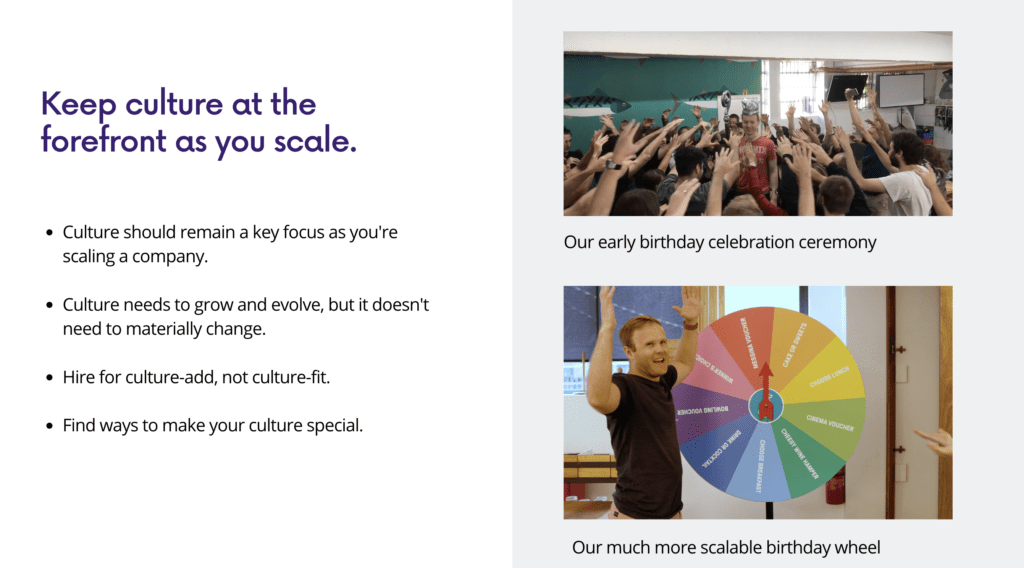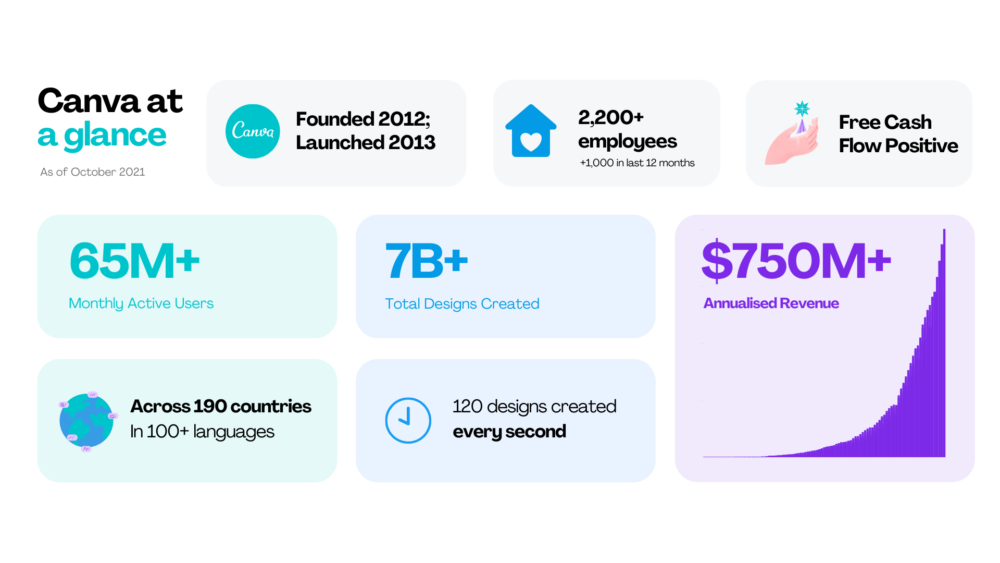
Launched in 2013, Canva has over 2000 employees and more than 65M active users. Zach Kitschke, the CMO at Canva, has been a part of this hypergrowth since the beginning, and took on various roles in marketing, customer service, and product management teams. After a couple of years in building out Canva’s people functions, he is now investing in growing the company as a CMO. He sits down with SaaStr CEO and Founder, Jason Lemkin to share his five lessons learned in nearly a decade of hypergrowth at Canva, and how it paved the path to their near-billion-dollar achievement.
1. Build communities around your product
Community is a key part of Canva’s success. The majority of its growth comes from word of mouth that has been critical leverage over the years. Canva started this by design-teaching workshops. Workshops are a mutually valuable way to get people interested in the product and get early feedback.
It’s essential to offer value to your community. Tell people how you’re solving a genuine problem. Solve for that moment and niche, and then iterate for scale once you’ve validated.
Your product is the main driver of growth. Spend time testing and evolving to understand the emotional journey behind your product. UserTesting.com is a fantastic tool. Then strengthen and evolve your product around the needs of your community. For example, Canva Pro was developed when Huffington Post reached out with an interest in creating branded assets with Canva.
As you grow, the nature of the community evolves. There can be multiple types of communities around your product. The Canva community primarily consisted of social media managers in the early days. Now it includes people who create tutorials and templates, or the small business owners who went online during the pandemic. Ultimately, the community includes people who are achieving their goals with the help of your product.
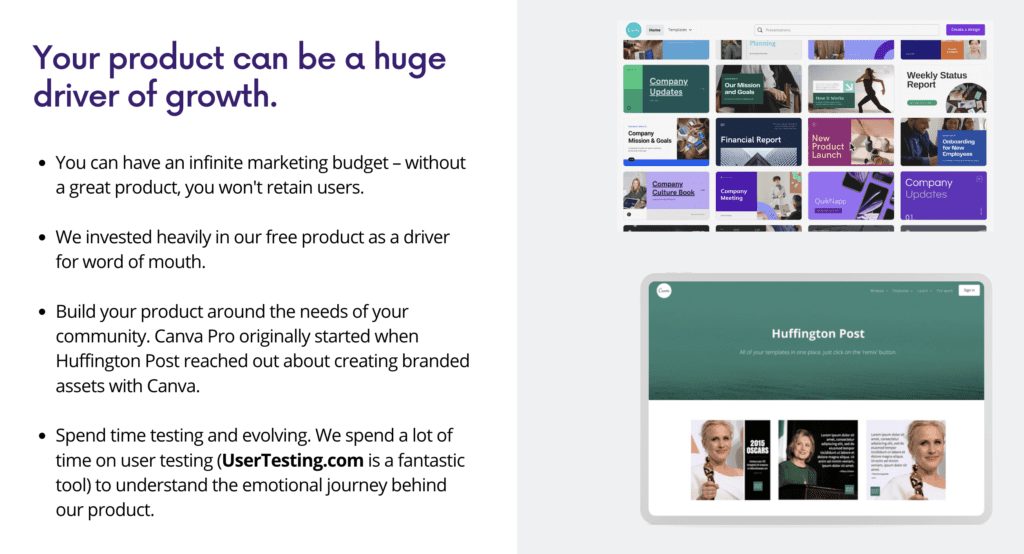
2. Practice just-in-time learning
Learning is a constant journey. No one has every answer. Things change quickly and you have to adapt and evolve. Just-in-time learning is a must-have trait for startups.
Sharpen your learning skills as an individual and as a company. Keep learning and constant innovation going. Measure what works for you, and double down on it. Figure out what you need and when you need it. Ask questions. Build your MVP, test your theory – then iterate and scale on the fly.
Hire people with passion, creativity, and enthusiasm. Empower your teams, encourage them to do the same, and then move out of the way. Your focus can then be on the next thing to learn and test.
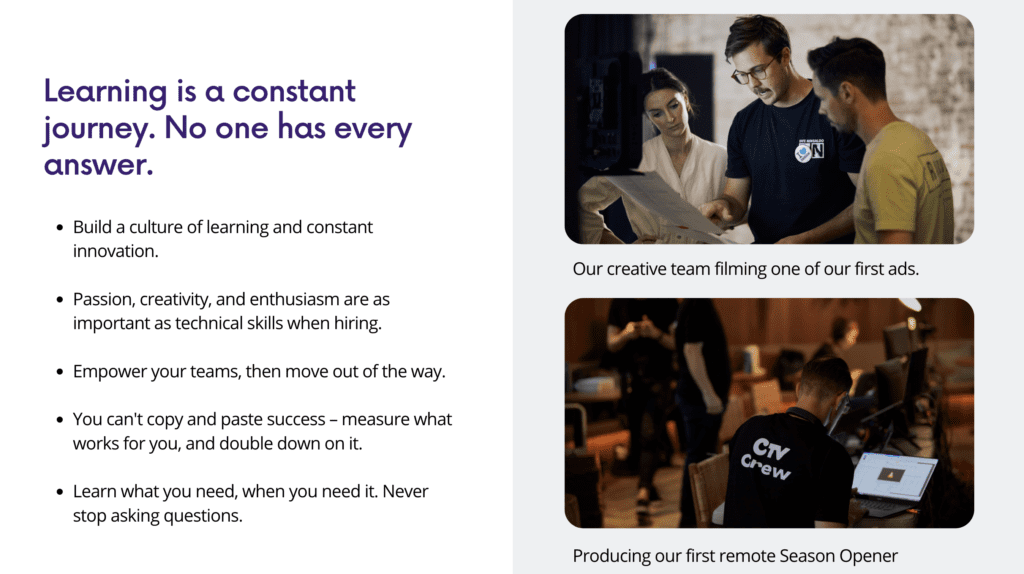
3. Start niche, go wide
Start with a small set of people who you want to help solve their problems. Find something you can solve extremely well before moving on to the next thing.
Focus on cracking one vertical at a time before trying to win over 10 at a time. Take learnings from each vertical and apply them to the next. You can’t do everything at once. Moving one vertical at a time focuses your efforts and gives you opportunities to iterate faster.
To win individual verticals, research to understand your audience. Decide on the channels that make sense for your audience and at your scale. Define specific audiences. Build content that matters to them. Once you succeed with this audience, replicate with the next vertical. Then use the same full-funnel approach for the next one.
Canva started as a social media tool and has now expanded to many kinds of individuals and businesses who need a user-friendly design tool.
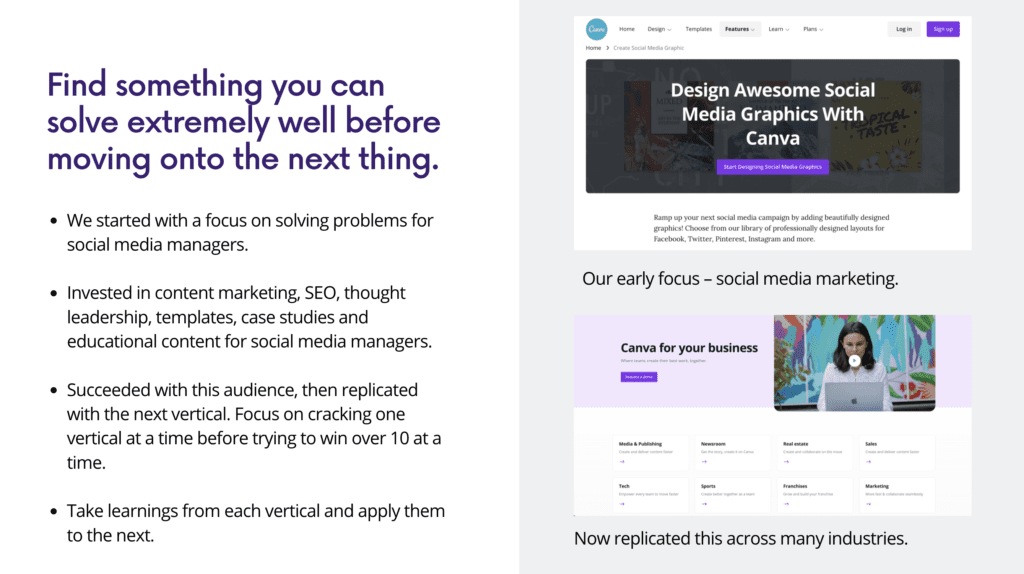
4. Design for the future
Hypergrowth comes from taking decisions with the future in mind. Things you worked on in the past result in your product success today. Always be planting the seeds for future growth. Then keep picking the fruits produced, as in leveraging the results of your past efforts. Planting the seeds and picking the fruit produces growth.
Take time to step back from the day-to-day and look towards broader shifts and trends, such as remote work and digital transformation. When Canva first launched, live collaboration among users was the future for design. Canva started building collaborative design in 2013 and shipped it in 2020.
Invest in the areas where you’ll have the greatest impact. Think about where your industry or vertical will need to be in a few years and start building.
This includes building high-performing teams for the future. How do you do that?
- Build teams that scale by avoiding structure for the sake of having structure.
- Open new opportunities for people to grow.
- Build connected, fast-moving teams. For example, social media and brand marketing should interlock.
- Set goals and empower teams to achieve them by coaching and helping them unlock blockers.
Use this approach in your marketing as well. Sell solutions, not features.
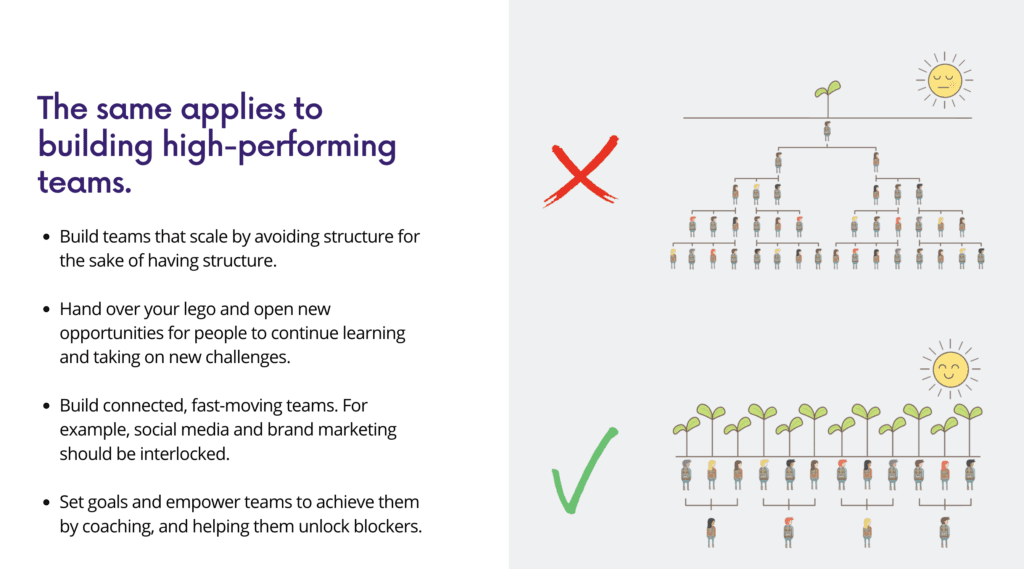
5. Culture is everything
Don’t underestimate the importance of culture in success. Culture plays an enormous role in building great teams, who, in turn, build great products and nurture great communities. Zach recommends The Power of Moments by Chip and Dan Heath to create a culture focused on creating peak moments.
Setting goals is part of the culture, but celebrating them is just as important. Set crazy big goals, and then celebrate success. It’s important to share kudos with your team. At Canva, it’s not a goal if you haven’t planned the celebration. The quirkier, the better.
Think about what makes your culture unique. This is different for every company and depends on where you create maximum impact. You can’t copy and paste culture and values. Your values should help to drive your growth.
Keep the culture at the forefront as you’re scaling a company. It needs to grow and evolve, but it doesn’t need to materially change. Hire for culture-add, not culture-fit, and find ways to make your culture special.
